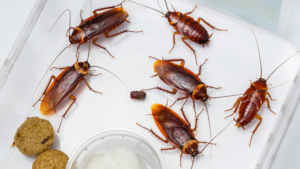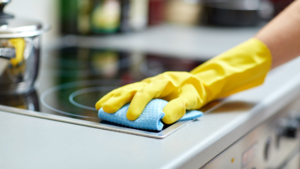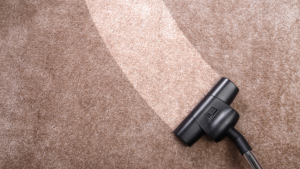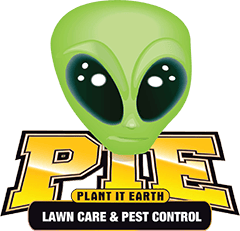As summer draws to a close, many homeowners notice an increase in indoor pest activity. The transition from the warm outdoor environment to the cooler indoor space makes homes an inviting retreat for a variety of pests. From ants marching in the kitchen to spiders weaving webs in the corners, late summer can bring a host of unwanted critters inside.
Understanding the common indoor pests and knowing how to tackle them is crucial for maintaining a comfortable and healthy living space. Sometimes the sweltering heat of summer causes pests to seek shelter inside, bringing along their own set of problems. By the end of summer, certain pests may become more aggressive in their search for food and shelter.
Paying attention to early signs of infestations and taking preventive measures can save you from a bigger headache later on. Let’s dive into some practical tips and solutions for managing these late summer indoor pests, ensuring your home stays pest-free and cozy as the seasons change.
Common Indoor Pests in Late Summer
As summer winds down, several pests often find their way indoors. Knowing what to look out for can help you address issues promptly.
- Ants: These small insects are on a constant search for food and water. They can enter your home through tiny cracks and quickly establish colonies near sources of sustenance.

- Cockroaches: Cockroaches thrive in warm, humid environments. They are often found in kitchens and bathrooms, where they can easily access food and moisture.
- Spiders: While many spiders are harmless, their webs can make your home feel unclean. They often seek shelter indoors as temperatures cool.
- Flies and Gnats: These pests are attracted to food, garbage, and moisture. They can be annoying and even spread diseases.
- Fleas and Ticks: Pets can bring fleas and ticks into the home. These pests can multiply quickly and cause discomfort to both pets and humans.
- House Mice: Mice seek shelter indoors as outdoor temperatures drop. They can cause damage by gnawing on wires and can contaminate food.
Recognizing these common pests helps you take the necessary steps to keep them under control.
Signs of Pest Infestation
Early detection of pest infestations can prevent bigger problems down the road. Here are signs that you may have a pest problem:
- Droppings: Small black or brown droppings are a common sign of pests like rodents and cockroaches. Check under sinks, in corners, and behind appliances.
- Chewed Wires or Furniture: If you notice gnawed wires, furniture, or walls, you likely have a rodent problem. Mice and rats chew to keep their teeth sharp.
- Unusual Noises: Scratching sounds in the walls, attic, or under the floor are often signs of rodents.
- Nests: Rodents and some insects build nests using shredded paper, fabric, or insulation. Look in hidden spots like behind appliances or in storage areas.
- Grease Marks: Rodents leave greasy rub marks along walls where they travel. These marks result from contact with their oily fur.
- Odors: A strong, musty odor could indicate the presence of pests like cockroaches or mice.
- Dead Bugs: Finding numerous dead bugs, especially near windows or in basements, can indicate an infestation.
By being aware of these signs, you can act quickly to address any pest issues before they become severe.
Preventive Measures to Keep Pests Out
Taking preventive measures is the most effective way to keep pests out of your home. Here are some steps you can take:
- Clean Regularly: Keep your home clean, especially the kitchen. Crumbs and spills attract pests. Wipe down counters, sweep floors, and take out the garbage regularly.
- Store Food Properly: Keep food in airtight containers. Don’t leave out pet food overnight. Make sure to clean up crumbs and spills immediately.
- Reduce Clutter: Piles of newspapers, cardboard, and clutter offer hiding places for pests. Keep your home organized and dispose of any unnecessary items.
- Fix Leaks: Repair any leaky pipes or faucets. Many pests are attracted to moisture. Make sure to address any sources of standing water.
- Ventilation: Ensure good ventilation in basements, attics, and crawl spaces. Proper airflow helps reduce humidity, making these areas less attractive to pests.
- Proper Garbage Disposal: Use trash cans with tight-fitting lids. Take out the garbage frequently and keep bins clean to avoid attracting pests.
Effective prevention limits the chances of pests making themselves at home in your space.
Sealing Cracks and Openings
Sealing cracks and openings in your home is vital for keeping pests out. Here are steps you can take to secure your home:
- Inspect Entry Points: Check for gaps and openings around doors, windows, and foundations. Pay special attention to areas where utilities enter your home.
- Caulk and Seal: Use caulk to seal gaps around windows and doors. Expanding foam works well for larger gaps or holes around pipes and vents.
- Install Door Sweeps: Door sweeps block the gap between the bottom of the door and the floor. Install them on exterior doors to prevent pests from entering.
- Repair Screens: Ensure that all window and door screens are intact. Repair any tears or holes to keep out flying insects.
- Cover Vents: Use mesh covers on vents and chimneys to prevent pests from entering while still allowing airflow.
- Check Roof and Attic: Inspect the roof and attic for holes or gaps. Seal any discovered openings to prevent pests from entering these areas.
Sealing these entry points goes a long way in keeping pests outside where they belong.
Effective Ways to Manage Ants Indoors
Ants can be a real nuisance once they find their way inside. Here are some effective methods to deal with them:
- Identify the Type: Knowing the type of ant can help you choose the best control method. Common household ants include sugar ants, carpenter ants, and pavement ants.
- Clean Up Food Sources: Ants are attracted to food crumbs and sticky surfaces. Wipe down counters, sweep floors, and store food in airtight containers. Don’t leave out pet food overnight.
- Use Ant Baits: Place ant baits near trails and entry points. The bait attracts worker ants, who take it back to the colony, eventually killing the queen and the rest of the ants.
- Seal Entry Points: Seal cracks and gaps that ants use to enter your home. Block off any holes using caulk or expanding foam.
- Natural Remedies: Consider natural deterrents like vinegar, lemon juice, or essential oils. Spray these solutions where you’ve seen ants.
By following these steps, you can manage indoor ants effectively and prevent future invasions.
Dealing with House Spiders
While spiders can be helpful by preying on other insects, many people prefer not to share their home with them. Here’s how to handle house spiders:
- Remove Webs: Regularly clean corners, ceilings, and hidden areas where you see webs. This discourages spiders from settling in.
- Reduce Clutter: Spiders love hiding in cluttered areas. Keep storage spaces tidy and organized to minimize their hiding spots.
- Use Essential Oils: Spiders dislike the smell of essential oils such as peppermint, tea tree, or lavender. Mix a few drops with water and spray around windows, doors, and other entry points.
- Keep Lights Off: Outdoor lights attract insects that spiders feed on. Keeping lights off when not needed can reduce your home’s attractiveness to spiders and their prey.
- Install Screens: Make sure all windows and vents are properly screened to keep spiders and insects from entering your home.
- Remove Food Sources: Spiders eat other bugs, so controlling insect populations indoors will indirectly help to reduce spiders.
Taking these actions can help you manage and reduce the number of house spiders.
How to Handle Cockroach Infestations
Cockroaches are one of the most dreaded indoor pests. Here’s how to handle a cockroach infestation:
- Identify Entry Points: Check for cracks, gaps, and holes in walls, floors, and near utility lines. Seal these entry points with caulk or expanding foam.

- Eliminate Food and Water Sources: Cockroaches are attracted to food and moisture. Keep your kitchen clean, store food in sealed containers, and fix any leaky pipes.
- Use Baits and Traps: Place cockroach baits and traps where you’ve seen activity, such as under sinks, behind appliances, and in dark corners.
- Apply Insecticides: Choose an insecticide labeled for cockroach control and apply it in areas where they hide, like baseboards, behind cabinets, and around drains.
- Professional Help: If the infestation persists, consider calling a professional pest control service. They can provide more potent treatments and offer ongoing monitoring.
- Proper Sanitation: Always maintain a high level of cleanliness. Regularly empty trash bins, avoid leaving dirty dishes overnight, and clean up spills promptly.
By following these tips, you can significantly reduce and eliminate cockroach problems in your home.
Controlling Indoor Flies and Gnats
Flies and gnats can be quite bothersome inside your home. Here’s how to keep them under control:
- Prevent Entry: Keep windows and doors closed or use screens to prevent flies and gnats from entering. Repair any tears or gaps in existing screens.
- Eliminate Breeding Sites: Flies and gnats are attracted to moisture. Keep sinks and drains clean and dry. Avoid overwatering houseplants and remove any standing water.
- Proper Waste Management: Dispose of garbage regularly and use a trash can with a tightly fitting lid. Keep compost bins away from the house.
- Use Traps: Set up fly traps or sticky strips in areas where you notice flies or gnats. These traps can catch and reduce their numbers.
- Natural Repellents: Use essential oils like eucalyptus, lavender, or basil to deter flies and gnats. Mix a few drops with water and spray around the home.
- Clean Regularly: Maintain a clean home by wiping down counters, cleaning up spills promptly, and not leaving dirty dishes out.
By implementing these strategies, you can keep flies and gnats at bay and enjoy a pest-free home.
Managing Fleas and Ticks Inside Your Home
Fleas and ticks can become a big problem as the weather cools down and they seek shelter inside. These pests are not only annoying but can also carry diseases. Here’s how to control them:

- Vacuum Regularly: Regular vacuuming removes fleas, ticks, and their eggs from carpets and furniture. Pay special attention to pet bedding areas.
- Wash Pet Bedding: Clean pet bedding in hot water weekly to kill fleas and ticks.
- Treat Pets: Use vet-recommended flea and tick treatments for your dogs and cats. This prevents these pests from hitching a ride into your home.
- Seal Entry Points: Close any gaps and cracks where ticks and fleas might enter.
- Use Flea and Tick Sprays: Use sprays designed for indoor use to treat infested areas. Follow the product instructions carefully.
Keeping these pests under control requires consistent effort. However, these steps can help keep your home and pets pest-free.
Natural Remedies for Indoor Pest Control
Sometimes, natural remedies can be effective in keeping indoor pests at bay. Here are some safer and easy-to-use options:
- Essential Oils: Peppermint, tea tree, and eucalyptus oils are natural repellents. Dilute with water and spray around entry points and problem areas.
- Diatomaceous Earth: This natural powder can be sprinkled in areas where you’ve seen pests. It’s effective against a variety of pests like ants, spiders, and fleas.
- Vinegar and Water: A mixture of vinegar and water can deter ants and flies. Use it to wipe down counters and surfaces.
- Herbs: Herbs like basil, rosemary, and lavender can repel pests. Place potted herbs in areas where pests are a problem.
These natural remedies can reduce pests in your home without using harsh chemicals.
When to Call Professional Pest Control Services
Sometimes, a pest problem can get too big for DIY methods. Knowing when to call professional pest control services can save you time and trouble:
- Severe Infestations: If you see large numbers of pests or signs of multiple types of infestations, it’s time to call in the experts.
- Recurring Issues: If pests keep coming back despite your best efforts, professional intervention may be necessary.
- Health Concerns: If pests pose a health risk to you or your family, such as severe allergic reactions or the transmission of diseases, professional help is crucial.
- Structural Damage: Pests like termites can cause significant damage to your home. Early professional treatment can prevent costly repairs.
Professionals have the tools and expertise to handle serious pest issues effectively, ensuring your home is safer and pest-free.
Schedule Your Indoor Pest Control With Plant It Earth
Taking care of indoor pest problems, especially as seasons change, is crucial for maintaining a healthy home. From managing fleas and ticks to trying natural remedies and knowing when to seek professional help, there are various strategies to keep pests at bay. When it’s time for a deeper approach, our team at Plant It Earth is here to provide expert pest control services that target the specific needs of your home.
Conclusion
Managing indoor pests effectively requires a combination of vigilant home care and timely professional intervention. Whether it’s preventing fleas and ticks, using natural pest control methods, or knowing when to call the experts, addressing these problems early can make a huge difference. Pests can lead to health concerns and damage to your home, so it’s essential to take these issues seriously.
Ready to make your home pest-free? Schedule your indoor pest control service with Plant It Earth today. Our team will ensure your living space is comfortable and safer from unwanted pests. Contact us now to book an appointment and protect your home.
